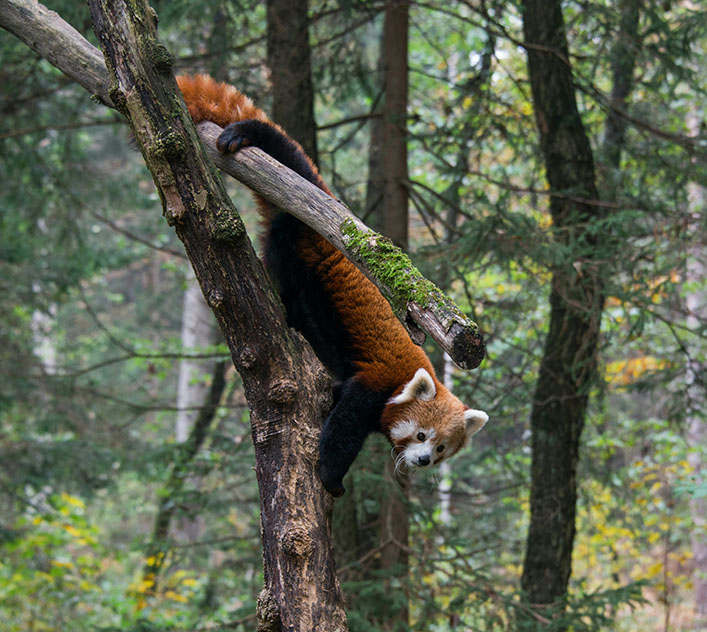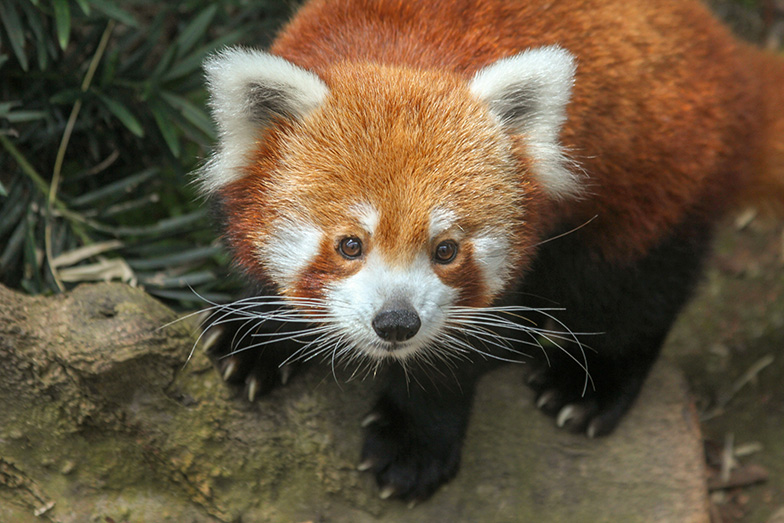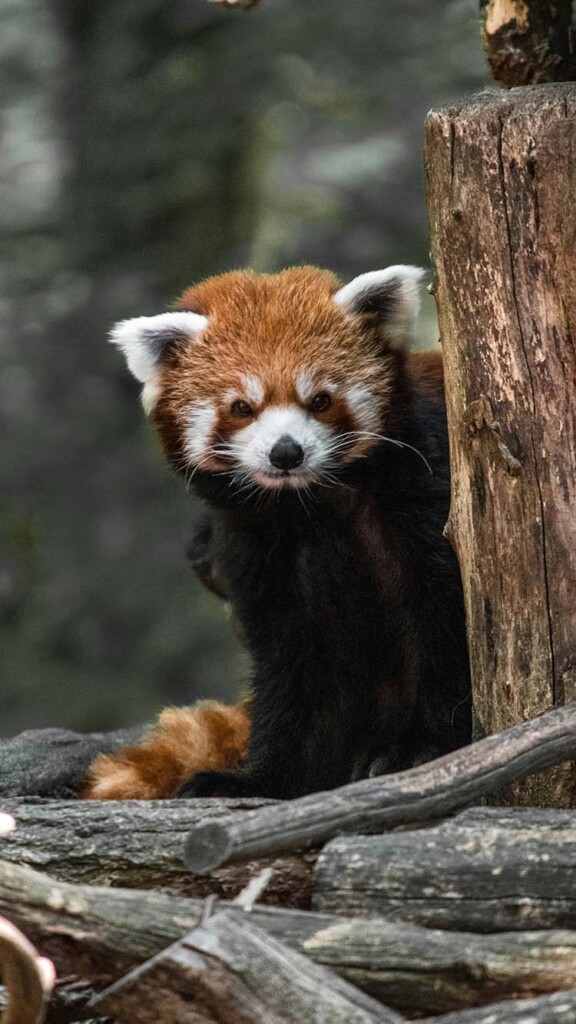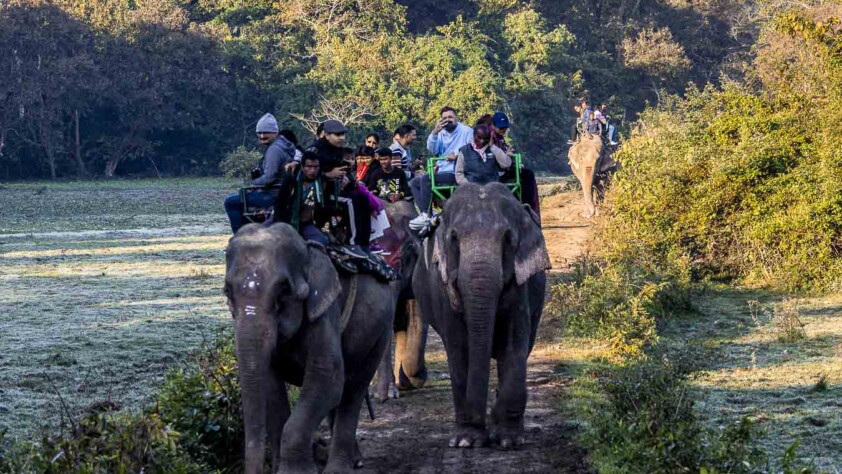The RED PANDA, scientifically known as Ailurus fulgens, is a charismatic and elusive mammal native to the temperate forests of the Himalayas. Often overshadowed by its more famous counterpart, the giant panda, the red panda is equally fascinating and important to the ecosystem. In India, red pandas are primarily found in the states of Sikkim, West Bengal, Arunachal Pradesh and Meghalaya. This article delves into the red panda’s habitat, behavior, conservation status and the efforts being made to protect this unique species in India.

Habitat and Distribution
1. Himalayan Range:
The red panda inhabits the temperate forests of the Himalayas, ranging from Nepal to Bhutan and across northern India into China and Myanmar. In India, their presence is notable in the eastern Himalayan states. They thrive in forests that are characterized by a mix of deciduous and coniferous trees, with dense understory vegetation including bamboo, which forms a significant part of their diet.
2. Specific Locations in India:
- Sikkim: The state’s lush forests and high-altitude terrain provide an ideal habitat. Areas like Khangchendzonga National Park are known to host these creatures.
- West Bengal: In the Darjeeling district, particularly in the Singalila National Park, red pandas are a significant attraction.
- Arunachal Pradesh: The state’s extensive forests, such as those in Namdapha National Park, offer suitable habitats.
- Meghalaya: Although less common, red pandas are also found in the subtropical and temperate forests of Meghalaya.
Physical Characteristics and Behavior
1. Appearance:
Red pandas are strikingly beautiful animals with a reddish-brown fur, a long, bushy tail with rings, and a waddling gait due to their short front legs. They have a round face with white markings, which makes them appear somewhat like a raccoon, to which they are distantly related.
2. Diet:
Bamboo constitutes the primary diet , similar to giant pandas. However, they are omnivorous and also consume fruits, acorns, roots, and occasionally small birds or insects. Their specialized wrist bone, functioning somewhat like a thumb, helps them grasp bamboo and other food items.
3. Behavior:
Red pandas are solitary animals, coming together only during the mating season. They are crepuscular, being most active during the dawn and dusk hours. Known for their climbing abilities, they spend much of their time in trees, both to forage and to escape predators.
4. Reproduction:
The breeding season for pandas is typically from January to March. After a gestation period of about 135 days, the female gives birth to one to four cubs. The young are born blind and depend entirely on their mother for the first few months.


Conservation Status
1. Threats:
The red panda is classified as Endangered on the IUCN Red List. The primary threats to their survival include habitat loss due to deforestation, fragmentation of their living spaces, and poaching. Additionally, climate change poses a significant threat by altering their habitat and food availability.
2. Population:
Estimating the exact number of red pandas in the wild is challenging due to their elusive nature. However, it is believed that there are fewer than 10,000 individuals remaining, with the population in India being a critical part of the global total.
Conservation Efforts in India
1. Protected Areas:
Several national parks and wildlife sanctuaries in India have been established to protect the habitat of the red panda. These include Khangchendzonga National Park in Sikkim, Singalila National Park in West Bengal, and Namdapha National Park in Arunachal Pradesh.
2. Community Involvement:
Engaging local communities in conservation efforts is crucial. Programs that promote eco-friendly agricultural practices, sustainable tourism, and awareness about the red panda’s ecological role help in reducing human-wildlife conflicts and encourage local support for conservation.
3. Research and Monitoring:
Ongoing research and monitoring are vital for understanding red panda populations and their habitat requirements. Organizations like the Red Panda Network and various Indian wildlife agencies conduct field studies, camera trapping, and tracking to gather data on red panda distribution and behavior.
4. Breeding Programs:
Captive breeding programs, such as those in Padmaja Naidu Himalayan Zoological Park in Darjeeling, aim to boost the population of red pandas. These programs also focus on reintroducing captive-bred individuals into the wild to strengthen genetic diversity.
5. Awareness Campaigns:
Raising awareness about the red panda’s plight is crucial for its conservation. Educational programs in schools, community workshops, and media campaigns help spread knowledge and garner public support for conservation initiatives.

The Role of Ecotourism
1. Sustainable Tourism:
Ecotourism can play a significant role in red panda conservation by providing economic incentives for local communities to protect their natural habitats. Sustainable tourism practices ensure that the impact on the environment is minimal and benefits local populations.
2. Wildlife Safaris:
Wildlife safaris in places like Singalila National Park offer tourists a chance to see red pandas in their natural habitat. Such experiences can foster a deeper appreciation for wildlife and the importance of preserving these unique animals.


